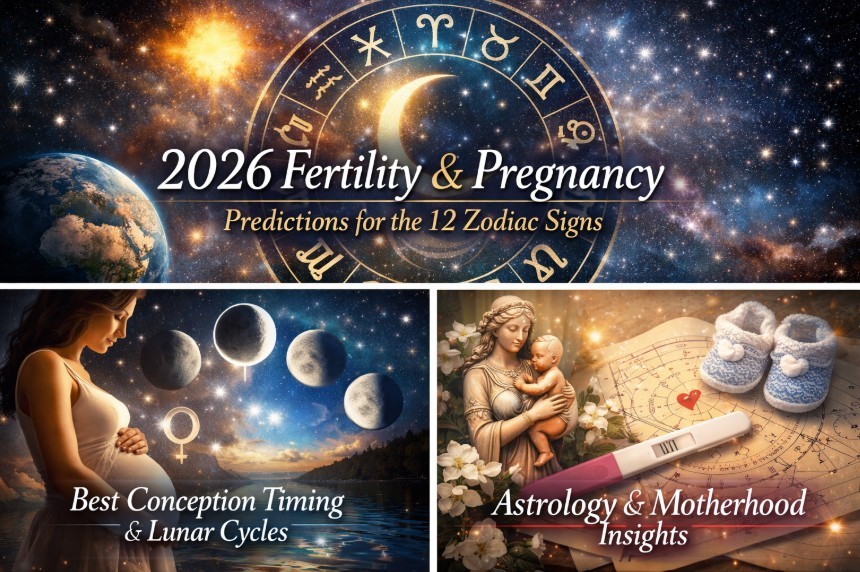How to Boost Website Traffic with AI: The Ultimate 2025 Playbook
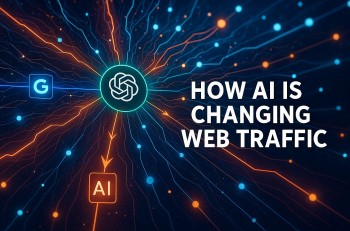 How AI Is Rewriting the Rules of Web Traffic - and What You Can Do About It How AI Is Rewriting the Rules of Web Traffic - and What You Can Do About It |
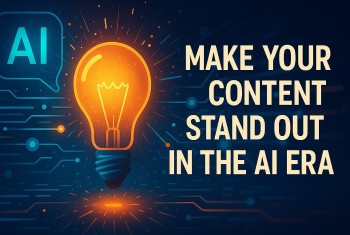 How to Make Content Stand Out in the Age of AI: SEO + Strategy Guide How to Make Content Stand Out in the Age of AI: SEO + Strategy Guide |
In today’s digital battlefield, getting traffic to your website is no longer just about publishing more content or buying ads. It’s about being smarter, faster, and more personalized. Enter AI — the most disruptive and powerful ally in your quest for growth.
With artificial intelligence, you can stop guessing and start scaling. From SEO automation to predictive analytics, AI helps you not only attract visitors but convert them into loyal, paying customers.
Learn more: The Best Ways to Get More Referral Traffic from AI Search
 |
| How can AI help increase website traffic |
1. AI-Powered SEO: Rank Smarter, Not Harder
Search engine optimization in 2025 is no longer about manually tweaking meta tags or guessing which keywords might rank. AI has reshaped the entire SEO process into something smarter, data-rich, and continuously adaptive.
What Is AI SEO?
AI SEO refers to the integration of artificial intelligence technologies—such as machine learning, natural language processing, and predictive modeling—into the full spectrum of search engine optimization. It enables websites to analyze vast amounts of data, predict search engine behavior, and optimize content in real time.
This isn’t a minor evolution. It’s a complete shift in how we approach visibility online. AI-powered SEO tools now outperform human-only analysis in areas like keyword mapping, competitor analysis, technical SEO audits, and even voice search optimization.
The State of AI SEO in 2025
As of Q1 2025, over 82% of marketing teams at mid-sized and enterprise companies report using at least one AI tool for SEO. That’s a 26% increase over 2023, showing just how quickly adoption has accelerated (source: ContentTech 2025 Report).
Major developments this year include:
-
LLM-powered SERP analysis: Tools now simulate Google’s BERT and MUM behavior to better predict ranking outcomes.
-
Real-time content scoring: AI grades your page’s SEO value as you write—updating as algorithms evolve.
-
Voice and multimodal search optimization: As users engage with search through voice and visual queries, AI adapts content structure accordingly.
AI Tools Leading the Charge
| Tool | Key Features |
|---|---|
| SurferSEO | Real-time content score, competitor analysis, NLP-driven keyword clustering |
| MarketMuse | Topic modeling, SERP intent analysis, AI-guided content briefs |
| SEOwind | AI-powered content creation + optimization workflow for both startups & pros |
| NeuronWriter | Google NLP term analysis and search intent mapping |
Real-World Workflow Example
Let’s say you want to rank for “AI email marketing tools 2025.” Here’s how an AI SEO process might look:
-
Keyword Discovery: AI tools identify semantically related keywords like “AI email subject line generator” or “automated email workflows.”
-
SERP Analysis: AI simulates Google’s understanding of the query. It shows that top-ranking pages are in-depth comparison articles with buyer guides.
-
Content Brief: Based on SERP results and NLP signals, the AI generates a content brief: include at least 7 tools, use H2s for each tool, include pricing info, pros/cons, and integrate schema markup.
-
Content Writing: You write—or co-write with AI—and monitor the real-time content score from tools like SurferSEO.
-
Post-Publishing Optimization: AI monitors your position and competitors weekly. If something shifts, it recommends tweaks to structure, meta titles, or link depth.
The Payoff
AI-powered SEO isn’t about replacing experts—it’s about augmenting them. You still need strategic thinking, brand context, and creativity. But AI takes the heavy lifting out of research, technical setup, and testing.
Key Benefits:
-
Faster content deployment with higher initial ranking potential
-
More accurate targeting with intent-aligned keyword strategies
-
Real-time adaptation to algorithm changes
2. Intelligent Keyword & Search Intent Mapping
In 2025, successful keyword strategy goes far beyond finding high-volume terms. What separates winning content from the rest is how well it aligns with search intent — the underlying purpose behind each query.
Understanding Search Intent
Search intent is the why behind a search. AI now enables marketers to segment and target keywords by intent type:
-
Informational: The user is looking to learn (e.g., “what is email automation?”)
-
Navigational: The user is looking for a specific site or brand (e.g., “HubSpot login”)
-
Commercial Investigation: The user is researching options (e.g., “best AI content tools 2025”)
-
Transactional: The user is ready to take action or make a purchase (e.g., “buy AI copywriting software”)
By understanding which category a keyword belongs to, you can create content that perfectly matches user expectations — a key factor in satisfying Google’s helpful content system.
How AI Identifies Intent Better Than Humans
AI tools analyze thousands of search results, user click behavior, bounce rates, and content structure to predict intent more accurately than traditional manual methods.
Advanced tools like SEOwind, Semrush’s Keyword Intent, and Clearscope analyze SERPs to determine:
-
What type of content ranks for that keyword (listicles, guides, product pages)
-
What questions are commonly asked around it
-
Whether users tend to bounce or engage after visiting those pages
This allows you to:
-
Match content format to ranking trends
-
Prioritize keywords with low competition but high intent alignment
-
Avoid wasting resources creating the wrong kind of content for the query
Mapping Keywords to the Funnel
Keyword intent doesn’t just influence content style — it guides funnel placement:
| Funnel Stage | Intent Type | Example Keyword | Ideal Content Type |
| Awareness | Informational | “how AI improves SEO” | Long-form educational blog post |
| Consideration | Commercial Investigation | “top AI SEO tools 2025” | Comparison article or video explainer |
| Decision | Transactional | “buy SEOwind subscription” | Product page or sales landing page |
This mapping ensures every keyword serves a strategic purpose in your content journey.
Practical Workflow Using AI
Let’s say your niche is AI-powered content marketing. Here’s how to use AI to build your keyword universe:
-
Seed Keywords: Start with a few broad terms (e.g., “AI for marketers”) in a tool like SEOwind.
-
Intent Clustering: Use the tool’s NLP engine to segment keywords by intent.
-
Content Mapping: Create a visual map linking keyword clusters to funnel stages.
-
SERP Analysis: Examine what’s already ranking and extract best practices.
-
Topic Expansion: Use AI to generate related FAQs, subtopics, and long-tail variants.
The Big Win
Intent-aligned content doesn’t just get more traffic — it attracts the right traffic. People are more likely to stay, engage, and convert when your content gives them exactly what they came for.
Learn more: How to Boost Website Traffic with ChatGPT: A 2025 Deep Strategy Guide
3. Content Creation at Scale with the CyborgMethod™
Content is still king, but in 2025, speed, personalization, and scalability are the new crown jewels. The CyborgMethod™ is an emerging model that merges artificial intelligence with human creativity to dramatically increase content output and performance.
What Is the CyborgMethod™?
The CyborgMethod™ refers to a structured content creation process where AI handles data-driven generation tasks and humans contribute expertise, nuance, and authenticity. It creates synergy between:
-
Data (what your audience wants)
-
AI (how fast you can deliver it)
-
Human input (why it matters to your reader)
This approach allows teams to produce high-quality, SEO-friendly, brand-consistent content at scale—without burnout or creative compromise.
The Three Phases of the CyborgMethod™
Phase 1: AI-Led Research and Drafting
AI tools like ChatGPT-4, Jasper, and SEOwind can now:
-
Analyze SERPs and competitor content in seconds
-
Generate detailed outlines with NLP keyword suggestions
-
Write full-length articles in natural language
-
Incorporate schema markup, meta descriptions, and FAQs
At this stage, you treat AI like your research assistant and junior writer. Feed it prompts, structured queries, or a custom template and let it deliver the draft content foundation.
Phase 2: Human Layering and Personalization
This is where you step in. Human input makes content feel trustworthy, authoritative, and emotionally resonant. Ways to enrich AI-generated drafts include:
-
Adding original insights, case studies, and client examples
-
Injecting your brand's tone and voice
-
Fact-checking AI hallucinations and outdated information
-
Including relevant stats, visuals, and expert quotes
By blending expertise with editorial judgment, you elevate the article from “technically correct” to truly compelling.
Phase 3: AI Optimization and Testing
Once content is human-approved, AI steps back in to:
-
Score readability, SEO, tone, and engagement potential
-
Suggest internal/external links and content updates
-
A/B test headlines, intros, and CTAs
-
Provide feedback on performance once live (via tools like SurferSEO or Clearscope)
You now have a closed-loop system where content creation, optimization, and iteration are continuous—not static.
Case Study: From 4 Articles/Month to 40+
A mid-sized B2B SaaS company used the CyborgMethod™ to:
-
Reduce content research time by 60%
-
Increase content output from 4 to 40+ posts/month
-
Boost organic traffic by 320% over six months
-
Achieve 3x higher conversion rates by aligning articles with buying intent
How to Get Started
To implement the CyborgMethod™:
-
Choose a core AI writing tool and set up your prompt library.
-
Train your team on how to give effective, structured input.
-
Define editorial checkpoints for tone, accuracy, and strategic alignment.
-
Use AI analytics tools to assess what content to scale or revise.
The Bottom Line
AI gives you speed. Humans give you soul. Combine them and you get content that performs at scale, builds authority, and drives sustainable traffic growth.
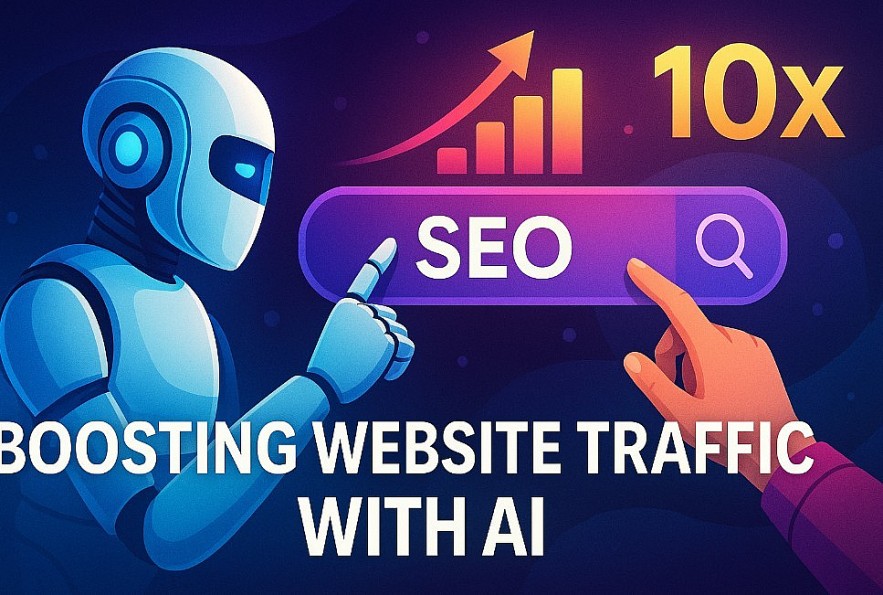 |
| How to increase website traffic with AI |
4. Optimizing Existing Content for Maximum ROI
Creating new content is exciting—but overlooking the goldmine you already own can be a costly mistake. In 2025, content optimization, powered by AI, is one of the most efficient ways to increase website traffic with minimal effort and maximum payoff.
Why Content Optimization Matters More Than Ever
With Google’s emphasis on experience, expertise, authoritativeness, and trustworthiness (E-E-A-T), simply publishing content is no longer enough. You must continuously refine your existing assets to stay competitive.
Studies show that optimized pages can increase traffic by up to 75% in under three months (Source: SEOwind Labs, 2025). Why? Because updated content signals relevance to both search engines and users.
How AI Makes Content Auditing Smarter
Manual audits are time-consuming. AI simplifies the process by:
-
Crawling your site and flagging low-performing or outdated pages
-
Evaluating content quality based on Google NLP signals
-
Suggesting keyword updates and readability improvements
-
Mapping internal links and detecting orphaned pages
Tools like SurferSEO, Frase, and Clearscope offer comprehensive optimization checklists and SEO scoring metrics for every piece of content.
Optimization Workflow with AI Support
Let’s walk through a modern content optimization process:
Step 1: Identify What to Optimize
Use AI-driven content audit tools to:
-
Sort pages by traffic, bounce rate, and time on page
-
Flag articles older than 12 months
-
Find content that’s close to ranking in positions 5–20
This is your opportunity zone—where a few updates can result in a major traffic boost.
Step 2: Analyze the Gaps
AI will suggest:
-
Related keywords to include
-
Structural issues (e.g., missing subheadings)
-
Competitive benchmarks
-
UX elements (e.g., load time, mobile formatting)
You’ll also get semantic keyword suggestions to improve topical depth and context.
Step 3: Rewrite, Expand, or Merge
Depending on performance, choose one of three strategies:
-
Rewrite: For outdated or low-quality posts
-
Expand: For thin content that lacks depth
-
Merge: For overlapping topics that cannibalize rankings
AI helps generate restructured outlines, new FAQ sections, and more detailed examples to support your updates.
Step 4: Re-Optimize Metadata and Links
Meta titles and descriptions often decay over time. AI tools can:
-
Auto-generate click-worthy meta descriptions
-
Suggest improved H1 and H2 tags for featured snippet optimization
-
Recommend internal pages to link based on semantic relevance
Step 5: Track and Iterate
After republishing:
-
Use AI analytics to monitor position changes, CTR, and dwell time
-
Set thresholds for performance (e.g., +20% CTR or +50% time on page)
-
A/B test variations with tools like Google Optimize or Microsoft Clarity
Example: 12X Traffic from a 2019 Blog Post
An ecommerce company updated a 2019 post on “best home office setups” using this AI optimization workflow. The result:
-
Word count increased from 800 to 2,000
-
Content updated with 2025 trends and remote work stats
-
Meta data rewritten to target high-CTR phrasing
-
Added interactive product comparison table
Within 6 weeks:
-
Traffic rose 1,200%
-
Bounce rate dropped 34%
-
The article ranked #3 on Google for 3 high-volume queries
Optimization Tips for 2025 and Beyond
-
Prioritize pages already getting impressions but few clicks
-
Use AI to auto-detect expired links and replace with fresh ones
-
Add voice search-friendly questions and answers
-
Implement schema markup (FAQ, How-to, Product) where possible
Final Thought
AI has made it easier than ever to breathe new life into old content. Instead of constantly starting from scratch, smart brands are revisiting their archives—and watching their traffic grow exponentially as a result.
5. AI-Personalized User Experience
In 2025, personalization isn’t a luxury—it’s an expectation. Visitors no longer want a generic, one-size-fits-all website experience. They want tailored content, smart recommendations, and seamless navigation that feels designed just for them.
AI makes that possible—and scalable.
The Rise of Dynamic Personalization
AI-powered personalization is the ability to dynamically adapt your website’s content, layout, and messaging based on the behavior, preferences, and profile of each visitor. It’s about delivering the right experience to the right person at the right time.
According to a recent Gartner study, companies using AI-driven personalization see a 30% higher engagement rate and up to 50% more conversions compared to those with static web content.
Key Applications of AI Personalization
1. Content Recommendations
AI analyzes on-site behavior (clicks, scrolls, dwell time) to recommend the most relevant:
-
Blog articles
-
Product pages
-
Downloadable resources
This increases session duration and encourages users to move deeper into your funnel.
2. Dynamic Calls-to-Action (CTAs)
Instead of showing the same CTA to everyone, AI allows you to tailor offers based on:
-
Referral source (e.g., email vs. social media visitor)
-
On-site behavior (e.g., cart abandoner vs. first-time visitor)
-
User profile (e.g., location, company size, job title)
3. Personalized Landing Pages
For paid campaigns, AI can create variants of landing pages that automatically adapt:
-
Headline and copy based on ad group
-
Hero image based on audience persona
-
Testimonials based on industry relevance
4. Chatbots and Conversational UX
Modern AI chatbots go far beyond answering FAQs. They can:
-
Recommend blog content based on the user’s current page
-
Guide visitors through product discovery or onboarding
-
Qualify leads and pass them to the right sales rep in real time
Tools like Drift, Tidio, and Intercom use NLP to deliver near-human chat flows.
How AI Personalization Works Behind the Scenes
Personalization engines use a combination of:
-
Behavioral data (browsing history, clicks, scroll depth)
-
Demographics (location, device, language, time of day)
-
Predictive modeling (what similar users did next)
AI then segments users and delivers variant content through real-time decision-making layers.
Example: 3X Conversions from Smart Personalization
A B2B SaaS platform used Dynamic Yield to personalize its homepage in three versions:
-
Tech startups saw a dashboard-style intro with growth metrics
-
Marketing agencies saw use cases tied to campaign analytics
-
Enterprise clients saw a security-focused pitch with integration options
The result: a 3x increase in lead form submissions and 45% more demo requests.
Tools That Power Personalization in 2025
| Tool | Best For |
|---|---|
| Dynamic Yield | Enterprise-level site personalization |
| Optimizely | A/B testing and multivariate personalization |
| Segment + Clearbit | Identity resolution and behavior tracking |
| RightMessage | On-page dynamic content for small teams |
Quick Wins to Get Started
-
Create audience-specific CTAs (e.g., “Book a Demo” vs. “Download Free Guide”)
-
Use AI pop-ups triggered by scroll behavior or inactivity
-
Personalize email capture forms based on referral traffic
-
Recommend articles based on user’s previously viewed categories
Final Thought
Website personalization is no longer limited to e-commerce giants or SaaS leaders. With AI tools now more accessible than ever, businesses of all sizes can create meaningful, adaptive experiences that drive engagement and build trust.
By turning every visit into a relevant, contextualized interaction, you make your website not just a destination—but a conversation.
6. Social Media Automation and Smart Targeting
In 2025, social media is more than a brand awareness tool—it’s a high-impact traffic engine. But to consistently drive visitors to your site, you need more than just clever captions and pretty visuals. You need AI to make it intelligent, efficient, and scalable.
Why AI Matters in Social Media Strategy
The average brand is now active on 6+ platforms. Managing content, engagement, timing, and analytics across them manually is not just inefficient—it’s ineffective.
AI-driven social media tools solve this by:
-
Generating platform-specific content that matches audience behavior
-
Automating post scheduling for optimal visibility
-
Analyzing trends to find high-traction topics
-
Refining your tone and format based on what works best per channel
Smart Content Creation with AI
Content fatigue is real. AI helps break through creative blocks by:
-
Suggesting headlines, hooks, and hashtags
-
Generating posts from blog articles, product pages, or press releases
-
Creating short-form videos or quote graphics automatically
Tools like Lately, Flick, and Ocoya help you transform long-form content into social-ready snippets at scale.
Audience Targeting and Segmentation
AI enhances your targeting capabilities with:
-
Behavioral analytics: Identifying who interacts, when, and how
-
Sentiment analysis: Understanding user emotions in comments and replies
-
Persona clustering: Grouping users by interests, profession, or behavior to deliver more relevant posts
With this data, you can tailor your tone, format, and timing per segment.
Smart Scheduling and Distribution
AI algorithms now analyze not just your own audience but industry-wide engagement patterns. They:
-
Schedule posts at your audience’s most active times
-
Avoid competition by finding “quiet” moments
-
Recycle evergreen content at intervals that boost reach without fatigue
Example: A wellness brand used AI to post customer testimonials during low-competition windows on Instagram, leading to a 42% increase in referral traffic over three months.
Social Listening and Brand Intelligence
Listening is as important as posting. AI tools like Brandwatch, Sprout Social, and Audiense:
-
Track mentions of your brand and competitors
-
Identify emerging topics before they trend
-
Detect negative sentiment or PR risks early
This insight feeds directly into smarter content creation and community engagement.
Paid Campaign Optimization with AI
Running paid campaigns? AI improves return on ad spend by:
-
Automatically A/B testing images, copy, and CTAs
-
Adjusting budget allocations in real time based on performance
-
Predicting clickthrough rates based on previous user behavior
Platforms like AdCreative.ai and Pencil generate dozens of ad variations in seconds, tailored to your ideal customer profile.
Tool Stack for AI-Powered Social Media in 2025
| Tool | Use Case |
|---|---|
| Lately | AI-generated multi-platform social posts |
| Flick | Hashtag research + caption writing |
| Ocoya | Graphic + caption automation |
| Brandwatch | Social listening + trend spotting |
| AdCreative.ai | Automated ad asset creation and testing |
Quick Wins to Activate Now
-
Use AI to repurpose your top blog post into 10 social variations
-
A/B test captions with and without emojis to track engagement shifts
-
Identify best posting time windows for each channel with predictive tools
-
Automate hashtag generation based on content type and sentiment
Final Thought
AI doesn’t just reduce your social media workload—it amplifies what’s working, fixes what’s not, and reveals what’s possible. In a landscape where attention is currency, AI ensures your content reaches the right audience at the right time, with the right message.
7. Reinventing Email Marketing with AI
Email remains one of the most effective digital marketing channels—and in 2025, AI is revolutionizing how we use it to generate traffic, nurture leads, and boost ROI.
Why AI and Email Are the Perfect Match
Email marketing is data-rich by nature. Every open, click, scroll, and unsubscribe tells a story. AI thrives on data, making it the ideal co-pilot for building smarter, more personalized campaigns.
With AI, your emails become:
-
Hyper-personalized to match each recipient’s interests and behavior
-
Predictively timed to land in inboxes when engagement is highest
-
Continuously optimized through automated A/B testing and real-time feedback loops
Personalization at Scale
Gone are the days of “Hi [First Name]” being the height of personalization. AI allows you to tailor content blocks, offers, images, and calls to action based on user data like:
-
Browsing history
-
Purchase behavior
-
Lead score or funnel stage
-
Time of day and geographic location
Example: A fashion e-commerce brand saw a 63% increase in click-through rates by using AI to recommend outfits based on a user’s browsing history, local weather, and past purchases.
Subject Line Optimization
Subject lines make or break open rates. AI tools like Phrasee, Smartwriter, and Seventh Sense:
-
Analyze subject line language patterns
-
Predict open rate likelihood
-
Auto-generate multiple headline variants
By testing at scale and learning from every send, AI helps you land the perfect subject line faster than human intuition alone.
Predictive Send Time & Frequency
Every subscriber has a “sweet spot”—the moment they’re most likely to open and engage. AI platforms monitor engagement patterns and dynamically schedule delivery:
-
Some users engage better in early mornings
-
Others are more active late at night or weekends
-
AI adapts timing per user, not per list
Pro Tip: Use predictive sending tools like Sendinblue or Mailmodo’s AI scheduler to deliver with precision.
Dynamic Content and Automation
With AI-powered ESPs (Email Service Providers), content blocks can adapt in real time:
-
Product recommendations based on recent views
-
Location-specific news or offers
-
Seasonal content adjustments without manual updates
Automations go beyond drip campaigns. AI can:
-
Trigger nurture sequences based on micro-interactions
-
Suppress emails when engagement drops to avoid fatigue
-
Prioritize high-intent leads with personalized journeys
Real-Time A/B Testing
Instead of waiting days for A/B test results, AI tools now:
-
Predict the winning variation early based on initial metrics
-
Auto-scale it to the rest of the audience in real time
-
Adjust future campaigns based on learnings
This reduces list fatigue and maximizes engagement.
Deliverability and Spam Prevention
AI helps protect your sender reputation by:
-
Flagging risky subject lines or content
-
Monitoring bounce and spam complaint trends
-
Suggesting list segmentation for low-engagement users
Your emails land in inboxes—not spam folders.
Tools Leading AI Email Marketing in 2025
| Tool | Core Strength |
|---|---|
| Mailmodo | Interactive emails + predictive automation |
| Rasa.io | AI-curated newsletters with personalized content |
| Seventh Sense | AI-optimized send times and frequency |
| Smartwriter.ai | Personalized outreach emails + subject line AI |
| Ortto | Unified marketing automation and behavioral email |
Quick Wins to Deploy Now
-
Test 3 AI-generated subject lines on your next campaign
-
Add 2–3 smart content blocks personalized by product interest
-
Use AI to re-engage dormant subscribers with tailored incentives
-
Segment your list using predictive engagement scores
Final Thought
Email marketing with AI is no longer just about batch-and-blast campaigns. It’s about building relationships at scale, based on behavior, preference, and timing. When every email feels like it was crafted just for them, your subscribers will reward you—with attention, clicks, and loyalty.
8. Predictive Analytics for Smarter Decisions
In 2025, marketing is no longer just about reacting to data—it’s about predicting it. Thanks to AI-powered predictive analytics, businesses can now anticipate trends, user behaviors, and campaign performance before they happen, enabling faster, more informed decisions.
What Is Predictive Analytics?
Predictive analytics uses historical data, machine learning models, and statistical algorithms to forecast future outcomes. In a marketing context, this means predicting:
-
Which users are likely to convert
-
What content will perform best
-
When traffic will spike or drop
-
Where to allocate budget for maximum ROI
How AI Powers Predictive Insights
AI enhances traditional analytics by:
-
Detecting subtle patterns across millions of data points
-
Continuously learning and refining predictions over time
-
Integrating signals from SEO, email, social media, CRM, and behavioral data
This allows you to take preemptive action—rather than waiting for a campaign to fail or succeed.
Traffic Forecasting and Trend Detection
AI tools like Google Analytics 4 (with predictive insights), PaveAI, and Adobe Sensei can:
-
Forecast traffic volume based on historical seasonality
-
Predict content decay and recommend refresh timelines
-
Alert you to unusual spikes or drops in engagement
Use Case: A SaaS company noticed a predicted 20% dip in organic traffic for Q3. Based on AI insights, they refreshed their top 10 blog posts in advance—preventing the traffic loss entirely.
Lead Scoring and Funnel Optimization
Predictive lead scoring identifies high-intent users based on:
-
Time on site
-
Pages viewed
-
Downloaded resources
-
Referral source
Sales and marketing teams can then:
-
Focus on leads most likely to convert
-
Trigger hyper-personalized email workflows
-
Send high-scoring leads directly to sales reps
Conversion Rate Prediction
AI can forecast which landing pages or product pages are most likely to convert—based on:
-
Historical performance
-
Current user behavior
-
Heatmap and scroll data
Pages flagged with low predicted conversion rates can then be redesigned or A/B tested proactively.
Budget Allocation and ROI Modeling
Don’t wait until the end of the quarter to know if your marketing budget is working. AI can model expected ROI across channels and recommend shifts in:
-
Paid ad budget by platform
-
Influencer spend by segment
-
Content production investment by keyword group
This reduces waste and improves cross-channel synergy.
Tools for Predictive Analytics in 2025
| Tool | Best For |
|---|---|
| PaveAI | Turn GA4 data into predictive marketing reports |
| Ortto | Behavior-based journey predictions |
| Kissmetrics | Conversion funnel forecasting and optimization |
| Adobe Sensei | Cross-platform predictive content insights |
Quick Wins to Deploy Now
-
Use predictive traffic modeling to plan your next content sprint
-
Score leads weekly and adjust your sales outreach strategy
-
Identify content at risk of traffic decay and refresh in advance
-
Adjust ad spend based on AI-predicted CPL (cost per lead)
Final Thought
AI-powered predictive analytics gives marketers something they’ve never had before: foresight. Instead of chasing results, you can shape them. Instead of reacting to traffic patterns, you can influence them. In a competitive digital landscape, that foresight is your unfair advantage.
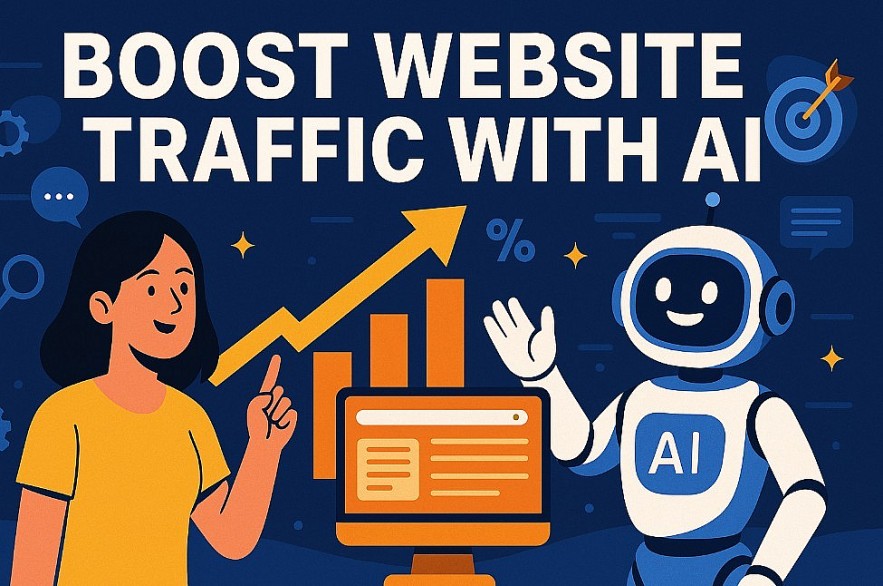 |
| AI-driven traffic growth |
9. Voice Search Optimization and Conversational AI
Voice search is no longer a futuristic novelty—it’s a mainstream behavior. In 2025, nearly 60% of all mobile searches are voice-based, and AI is central to capturing that traffic. With the growing adoption of smart speakers, voice assistants, and mobile voice search, businesses must optimize their content for conversational queries and build AI-powered dialogue systems that deliver value.
Why Voice Search Matters More in 2025
Voice queries differ dramatically from typed searches. They are:
-
Longer and more conversational
-
Often question-based (“What’s the best way to optimize content for AI?”)
-
Highly localized (“Where’s the nearest coworking space open now?”)
Optimizing for voice means preparing your content to answer questions clearly and concisely, often aiming for featured snippets and rich answers.
How AI Helps You Win at Voice SEO
AI tools support voice optimization in several ways:
-
Natural Language Processing (NLP): Understands how users phrase questions verbally
-
Query pattern recognition: Predicts rising voice trends and questions
-
Content formatting: Recommends changes to structure answers for voice clarity
Platforms like SEMrush Voice Search Assistant and Frase help tailor your pages for voice interactions.
Key Tactics for Voice Search Optimization
1. Target Long-Tail and Conversational Keywords
Use tools like AnswerThePublic or AlsoAsked to find real user queries. Then:
-
Optimize your headlines and H2s as questions
-
Include natural, concise answers within the first 40–50 words
2. Structure Content with Featured Snippets in Mind
Voice assistants typically pull answers from:
-
Paragraph snippets (definitions or quick tips)
-
Lists and step-by-step guides
-
Tables or data summaries
Ensure your pages include these formats and clearly mark them with schema markup.
3. Optimize for Local and “Near Me” Queries
If you operate a physical or service-based business:
-
Keep your Google Business Profile updated
-
Include local keywords, landmarks, and directions
-
Use structured data like LocalBusiness schema
4. Improve Page Speed and Mobile UX
Voice searches almost always come from mobile. AI-driven tools like PageSpeed Insights, NitroPack, or WebPageTest with ML overlays help you:
-
Optimize load time
-
Eliminate layout shifts
-
Boost core web vitals—all ranking factors for mobile and voice
Conversational AI: Turning Visitors into Engaged Users
Beyond SEO, AI-driven chatbots and voice assistants are transforming how users interact with websites:
-
AI chatbots can answer questions instantly, guiding users through FAQs, product recommendations, or onboarding.
-
Voice-based UX (via mobile or smart speakers) is expanding into content discovery, e-commerce, and lead generation.
-
Multimodal assistants (text + voice) are now powering websites in sectors like finance, travel, and healthcare.
Example: Boosting Engagement with Conversational AI
A university implemented an AI-powered admissions assistant on its website. Instead of a static FAQ page, users could ask questions via voice or chat, such as:
-
“What are the scholarship deadlines?”
-
“How do I transfer my credits?”
The results:
-
Bounce rate dropped by 29%
-
Time-on-site increased by 54%
-
Lead capture rate tripled
Tools to Power Voice and Conversational AI
| Tool | Use Case |
|---|---|
| Frase | Optimize answers for featured snippets |
| SEMrush Voice | Analyze voice-friendly keywords and performance |
| Tidio | AI chatbot with voice command capabilities |
| ChatBot.com | Build conversational flows with AI training |
| Speechly | Real-time voice UX integration |
Quick Wins to Start Today
-
Turn top blog posts into Q&A formatted versions
-
Add FAQ schema to core landing pages
-
Test voice-based chatbot popups for mobile visitors
-
Optimize product descriptions for natural language queries
Final Thought
As search becomes more conversational, your content must become more human. By embracing AI tools for voice SEO and conversational interfaces, you meet users where they are—literally speaking their language. The brands that adapt to this shift now will own the voice-driven web of the future.
10. AI-Driven Omnichannel Marketing Strategy
In 2025, your customers aren’t just on one platform—they’re everywhere. They move from Instagram to Google, from email to YouTube, from desktop to mobile, often in a single journey. To succeed, your brand needs to deliver a seamless, connected experience across all channels. This is where AI-powered omnichannel marketing becomes essential.
What Is Omnichannel Marketing?
Omnichannel marketing is a strategy that integrates all digital (and physical) channels to provide a consistent, personalized experience for the user. The goal is to meet your audience wherever they are—with the right message, at the right time, in the right format.
AI empowers this by:
-
Unifying customer data from all touchpoints
-
Predicting user behavior across platforms
-
Delivering dynamic content that adapts in real time
-
Automating messaging across email, social, ads, web, and chat
Why AI Makes Omnichannel Work in 2025
Today’s consumers expect fluid, intuitive interactions. But coordinating campaigns across five or more channels is incredibly complex without automation. AI simplifies this by:
-
Automating cross-channel campaigns based on behavior triggers
-
Using predictive modeling to deliver the next-best content or offer
-
Helping marketers understand the full customer journey with attribution modeling
How It Works: A Practical Example
Imagine this real-world scenario:
-
A user clicks on a Facebook ad for your product but doesn’t purchase.
-
Later, they Google your brand and read a blog post.
-
The next day, they receive a personalized email with product recommendations.
-
A few days later, your chatbot invites them back with a special offer.
Each touchpoint is coordinated, contextual, and relevant. AI ensures these moments don’t feel disconnected—they tell one cohesive story.
Key AI Capabilities Driving Omnichannel Success
1. Customer Data Platforms (CDPs)
AI-powered CDPs like Segment and Blueshift unify behavioral, transactional, and demographic data to build rich customer profiles. This data informs every downstream interaction.
2. Predictive Content Delivery
AI selects which content (blog, video, offer, etc.) to show next based on what’s worked for similar users. Tools like Adobe Target and Dynamic Yield personalize across web, email, and mobile.
3. Smart Retargeting and Ad Optimization
AI platforms automatically:
-
Segment users by channel and intent
-
Build lookalike audiences
-
Optimize spend in real time based on performance
4. Unified Messaging Across Channels
Tools like Ortto and Klaviyo allow marketers to build cross-platform journeys that respond dynamically to user actions. For example, a user who abandons cart on mobile might receive a push notification, then a retargeted ad, followed by an email—all orchestrated by AI.
Tool Stack for Omnichannel AI in 2025
| Tool | Role |
|---|---|
| Segment | Unified customer data and identity resolution |
| Blueshift | AI-powered marketing automation and CDP |
| Ortto | Journey mapping across email, chat, and ads |
| Adobe Target | Personalized testing and content delivery |
| Klaviyo | Ecommerce omnichannel engagement platform |
Quick Wins to Start Today
-
Sync data from all your platforms (email, CRM, ads) into a CDP
-
Set up AI-powered retargeting rules for recent site visitors
-
Use AI tools to test which message sequence drives the most clicks
-
Personalize abandoned cart flows with product-specific content
Case Study: E-Commerce Brand Lifts Sales by 78%
An online cosmetics brand unified their customer data using Segment and launched AI-optimized email and ad sequences tailored to each user. The result:
-
34% higher repeat purchase rate
-
78% increase in revenue from returning visitors
-
26% lower cost per acquisition (CPA) across paid channels
Final Thought
Omnichannel marketing isn’t just about being present—it’s about being consistent and contextual everywhere your users go. With AI, you can connect fragmented touchpoints into a high-converting journey that feels cohesive and personal. In the age of attention overload, integration is the ultimate competitive edge.
11. Implementing the Right AI Stack for Your Website
Understanding the power of AI is only the first step. To reap the benefits, you need the right tools, systems, and workflows in place. Implementing an AI stack doesn’t mean replacing your existing infrastructure—it means enhancing it with intelligent layers that automate, optimize, and personalize your traffic strategy.
What Is an AI Stack?
An AI stack is a combination of software tools and platforms that use machine learning, natural language processing, and data analytics to assist in marketing execution, measurement, and automation. A well-designed stack connects all stages of the user journey—from discovery to conversion.
Core Layers of a Modern AI Marketing Stack
1. Content Creation and Optimization Tools
These tools generate, rewrite, and enhance content for SEO and engagement:
-
ChatGPT / Jasper / Copy.ai: AI-assisted copywriting and ideation
-
SEOwind / SurferSEO / Clearscope: Keyword integration, SERP optimization, and content scoring
2. SEO and Technical Tools
AI systems that automate audits, analyze SERPs, and improve on-page elements:
-
MarketMuse / Frase / NeuronWriter: Competitive gap analysis, topical clustering
-
Screaming Frog with ML Add-ons / Sitebulb: Crawl diagnostics and intelligent reporting
3. User Experience and Personalization Engines
Tailor the user experience across web, mobile, and email:
-
Dynamic Yield / Optimizely: Personalize CTAs, layouts, content modules
-
Hotjar AI / Microsoft Clarity AI: Session replay + behavior heatmaps
-
RightMessage: Real-time personalization for SMBs
4. Automation and Workflow Orchestration
Drive multi-step campaigns with minimal manual effort:
-
Ortto / ActiveCampaign / HubSpot AI: Behavior-based journeys
-
Zapier with AI logic / Make (formerly Integromat): Connect disparate systems with conditional workflows
5. Analytics and Predictive Intelligence
Analyze and forecast website performance to guide future content and budget decisions:
-
PaveAI / Google Analytics 4 with ML plugins: Predictive reporting
-
Amplitude / Kissmetrics: Funnel forecasting, cohort analysis
Integration Blueprint
A sample mid-sized AI stack might look like:
-
Content: ChatGPT + SurferSEO + Frase
-
SEO: Screaming Frog + MarketMuse
-
UX: Hotjar AI + RightMessage
-
Email: Klaviyo AI + Mailmodo
-
Analytics: GA4 + PaveAI
The key is interoperability. Ensure your tools can pass data between each other—via APIs, webhooks, or shared CRMs/CDPs—so your AI can learn from each touchpoint.
Budgeting and Prioritization Tips
-
Start with one or two high-impact areas (content or email)
-
Choose tools with modular pricing or free tiers
-
Consider ROI over features—does this tool reduce manual hours or increase conversions?
Training and Team Readiness
AI tools are powerful, but adoption requires:
-
Training: Upskill your content, SEO, and marketing teams in prompt engineering, analysis, and tool operation
-
Experimentation: Build a culture of testing and optimization
-
Governance: Define ethical use guidelines and AI oversight processes
Final Thought
The right AI stack doesn’t just make your marketing smarter—it makes your team faster, your content sharper, and your strategy more scalable. You don’t need 50 tools—you need 5 that work together intelligently. Start with your biggest bottleneck, layer in automation, and let AI handle the complexity while you focus on creativity.
FAQs: Common Questions About AI for Website Traffic
AI in marketing is evolving fast—and so are the questions marketers and website owners have. Here are the most frequently asked questions, answered clearly and practically to help you implement AI with confidence.
Q1: Can AI really increase my website traffic, or is it just a buzzword?
Yes, AI can significantly increase your website traffic when applied correctly. From predictive keyword research and SEO optimization to content personalization and automated campaign orchestration, AI enables smarter, faster decision-making that directly impacts traffic volume and quality. The key is strategic implementation—not just tool adoption.
Q2: What is the fastest way to use AI to get more traffic?
Start by using AI for content optimization and keyword targeting. Tools like SurferSEO or SEOwind can help you identify quick-win opportunities—such as content updates or semantic keyword inclusion—that lead to near-immediate ranking improvements. Pair that with AI-generated blog posts or landing page refreshes to amplify the effect.
Q3: Will AI-generated content hurt my Google rankings?
Not if it’s high-quality and useful. Google’s algorithms are focused on value, relevance, and originality—not whether a machine or human wrote the content. The best practice is to use AI to draft and structure content, but then add your human expertise, fact-checking, and brand voice. Think of AI as the first draft, not the final product.
Q4: How do I choose the right AI tools for my site?
Focus on your current bottlenecks. Are you struggling with content output? Go with Jasper or ChatGPT. Is SEO your issue? Try SurferSEO or Clearscope. Need better conversion rates? Look into Dynamic Yield or Optimizely. Evaluate tools based on ease of integration, learning curve, and ROI potential—not just hype or features.
Q5: Is AI hard to learn or use for non-tech marketers?
Most modern AI tools are built with user-friendliness in mind. They often come with templates, pre-built workflows, and drag-and-drop interfaces. Still, a basic understanding of prompt design, data interpretation, and testing methodology will help you get the most value from AI. Upskilling is worth it—and increasingly essential.
Q6: How do I measure if my AI investment is paying off?
Track key metrics like:
-
Organic traffic growth (via GA4 or Search Console)
-
Conversion rates per channel
-
Time saved per content or campaign cycle
-
Email open/click rates with AI-powered personalization
-
ROI per tool compared to manual performance baselines
Use attribution modeling tools to connect AI usage directly to pipeline or revenue growth.
Q7: What’s the biggest mistake people make when adopting AI for traffic?
Treating AI like magic instead of a system. AI tools amplify what works—but only if your strategy is sound. Don’t deploy AI without a clear goal or measurement framework. Also, avoid over-automation. Balance is critical—AI needs human oversight to ensure relevance and quality.
Q8: How do I future-proof my AI marketing strategy?
-
Stay updated on AI advancements (follow product updates and case studies)
-
Invest in flexible tools that integrate well with others
-
Build internal documentation for AI workflows and tests
-
Create ethical guidelines for transparency and bias prevention
Most importantly, view AI as a team member—not just a utility. Foster a culture of experimentation and continuous learning.
Final Conclusion: The Future of Website Traffic Is Intelligent, Not Manual
AI is not a gimmick. It's the foundation of modern, scalable marketing. Whether you're a solo founder, a growth marketer, or a digital leader in a global enterprise, the sooner you adopt and adapt to AI, the more advantage you gain.
Use this playbook to build your AI strategy step-by-step. Start small. Stack wisely. Automate thoughtfully. And always add the human touch that transforms technology into results.
The future of traffic isn’t about working harder. It’s about working smarter—with AI on your side.
 Top 10 Best Free AI Tools for Excel to Work Smarter in 2025 Top 10 Best Free AI Tools for Excel to Work Smarter in 2025 This article reviews and ranks the top 10 best free AI tools for Excel in 2025, analyzing their features, pros, cons, and suitability for different ... |
 The Global State of AI in April, 2025: Tools, Models, and Policies Reshaping the Future The Global State of AI in April, 2025: Tools, Models, and Policies Reshaping the Future As of April 2025, artificial intelligence (AI) is evolving faster than ever—spanning powerful new models, ambitious policy shifts, and strategic global investments. |
 Top 10 Best Free AI Tools for College Students in 2025 Top 10 Best Free AI Tools for College Students in 2025 Choosing the right AI tools can make or break your college experience. |
 Top 10 Best Free AI Tools for Logo Design in 2025 Top 10 Best Free AI Tools for Logo Design in 2025 Discover the top 10 free AI tools for logo design in 2025 — powerful, easy-to-use platforms helping brands create standout logos without design skills or ... |
 Top 10 Best Free AI Social Listening Tools in 2025 Top 10 Best Free AI Social Listening Tools in 2025 Explore the top 10 free AI social listening tools in 2025 to monitor brand mentions, analyze sentiment, track trends, and improve customer engagement — all ... |



